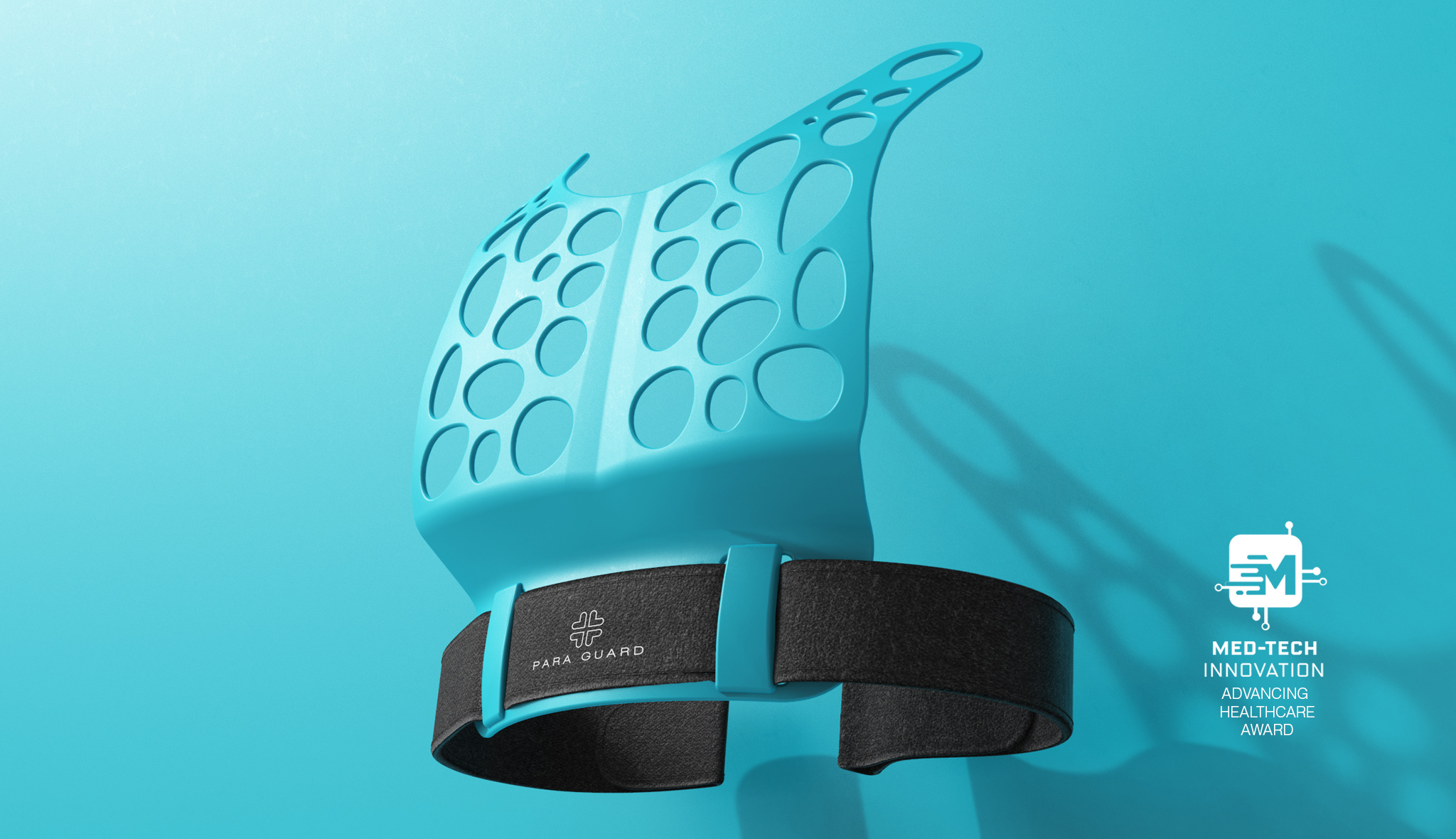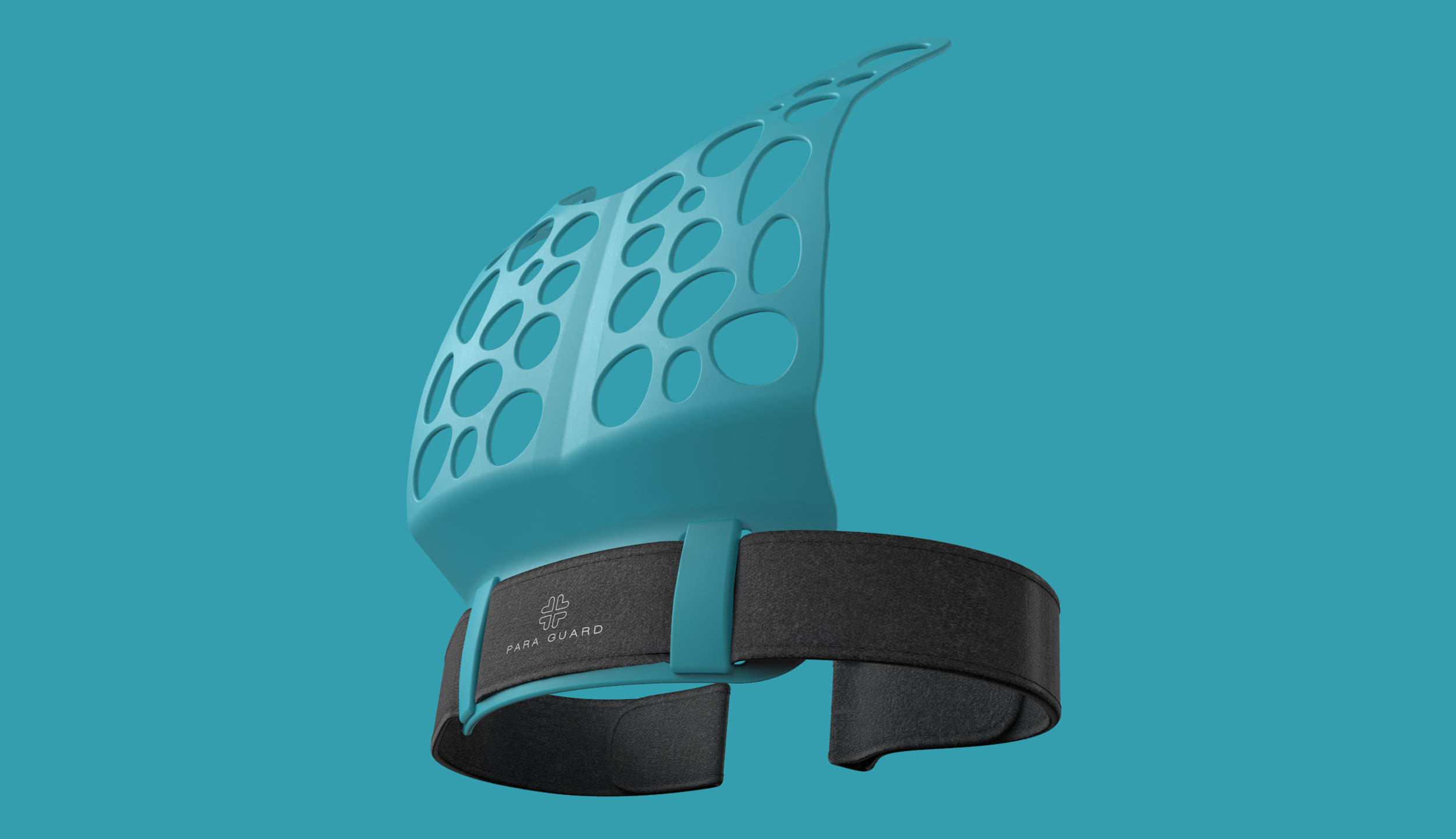Skin Deep – using 3D printing to solve a medical product design challenge.

What we produced was entirely bespoke, cost-effective and time efficient. The unique product followed the contours of the patient’s body, which we couldn’t have done in any less invasive way, using any other method.
It may be hard to believe that a 3D printer and a product design consultancy succeeded were a host of doctors and specialists had failed, but that’s exactly what happened when Bluefrog Design, a member of Medlink East Midlands, was asked to help a gentleman with a long-standing skin complaint.
Table of Contents
He suffered from a serious case of Paresthesia affecting his quality of life and severely impacting on his ability to cope with normal day-to-day activities. Paresthesia is an abnormal and uncomfortable sensation often presented as tingling, tickling, pricking, numbness or burning of a person’s skin with no apparent physical cause. In this instance, it produced a prickling sensation from the rib cage to the collar bone when his clothes touched his body. To alleviate his condition we designed and built a structure, cage-like in appearance, that stopped his garments touching his upper torso, thereby improving his wellbeing and comfort.
To do this, first of all we identified the most sensitive areas. Then 3D-scanned the patient’s body to identify the desensitised locations from which we could hang a support to keep his clothes away from his skin. Using remote scanning rather than contact measuring, we were able to avoid touching him and causing any further irritation, while capturing precise data to use in the design of the part using 3D CAD.
What we produced was entirely bespoke, cost-effective and time efficient. The unique design of this medical device followed the contours of the patient’s body, which we couldn’t have done in any less invasive way, using any other method.

The design is lattice-based so it’s light, giving a material saving of up to 60% compared with traditional production methods. This also provides ventilation to keep the patient cool; air can flow through the device between the clothes and the body.
The part was 3D printed in-house using medical-grade material, and hung from the patient where he suffered no irritation. Essentially, it was a lightweight frame, and this weight-saving was largely thanks to the production process itself. The design is lattice-based so it’s light, giving a material saving of up to 60% compared with traditional production methods. This also provides ventilation to keep the patient cool; air can flow through the device between the clothes and the body.
3D printing is key to Bluefrog Design’s core business, beyond medical work and into other sectors. As an industrial and product design consultancy, we often design prototypes and produce short run, high value products. Frequently very technical, they are the kind of thing that traditional processes can’t produce as quickly or economically.
Often we might make ten or more of something all exactly the same, that’s the beauty of 3D printing and then, if further iterations are required, we can take the 3D CAD file, tweak it, then manufacture, assemble and finish a variant of the original product. It would be technically challenging to adopt the same approach with injection moulding, or parts as it would require frequent and costly modifications.
This is an approach that clearly produces excellent results. Having produced one bespoke part for a specific patient, Bluefrog Design now has the experience, understanding and capability, to help anyone else suffering a similar condition, or needing a similar approach to a body-specific application.
If you’d like to know more about Bluefrog Design’s work and how we could help your project, call us on 0116 2530612.
If you would like to read further please see the article here on Statasys Website. – https://www.stratasys.com/explore/case-study/bluefrog-design
Like to learn more?
Socials




